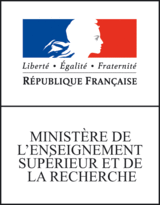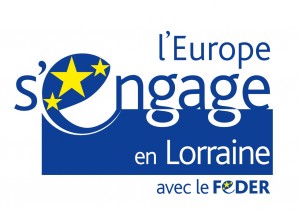⬆️ Top
Compute the connected components of a graph
The strategy main of the GRS below (cc.grs) outputs a set of graphs, each one being one of the connected components of the input graphs.
rule select_one { % This rule applies exactly once on each connected component of the graph.
pattern { X[!select] } % Select an unselected node X
% Nodes are totally ordrerd though an internal "__id__" value;
% we use this in the two without clauses below to ensure that only one node can be chosen in a given connected component:
% the "smallest" one, according to "__id__" order
without { X -> Y; Y.__id__ < X.__id__} % such that there is no "smaller" node Y linked as a successor of X
without { Y -> X; Y.__id__ < X.__id__} % add such that there is no "smaller" node Y linked as a predecessor of X
commands { X.select=yes }
}
package propagate {
rule down {
pattern { Y[select]; X[!select]; Y -> X }
commands { X.select = yes }
}
rule up {
pattern { Y[!select]; X[select]; Y -> X }
commands { Y.select = yes }
}
}
rule remove_unselected {
pattern { X[!select]; }
commands { del_node X; }
}
rule clean {
pattern { X[select]; }
commands { del_feat X.select; }
}
strat main {
Seq (
select_one,
Onf (propagate),
Onf (remove_unselected),
Onf (clean),
)
}Explaining the GRS
Applied on a graph G, the GRS works as follow:
- Apply the
select_onerule which output exactly one new graph for each connected component (see comments in rule for detail); in the graph one of the node of the selected connected component contained the featuresselect=yes - Apply iteratively the package
propagatein order to mark all the node of the connected component with the featureselect=yes - Remove all unselected nodes that are not in the current connected component
- Remove the feature
select=yeson all nodes
Examples
Basic two components graph
With the graph two_cc.json, and the command:
grew transform -grs cc.grs -i two_cc.json -json
We obtained two output graphs, one for each connected component in the input graph.
| Input | Output 1 | Output 2 |
|---|---|---|
Example with linguistic data
Starting with the sentence below:
We apply to it the following GRS which removes appos relations:
rule r { pattern { e: X -[appos]-> Y} commands {del_edge e }}
strat main { Onf (r) }We obtained the following structure:
If we applied the GRS above, we obtained 3 small structures:
| cc1 | cc2 | cc3 |
|---|---|---|




